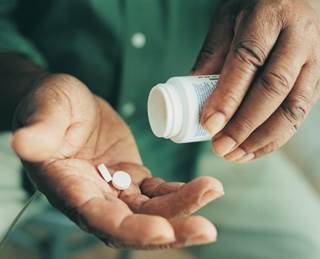Search for dialysis centres here
 Log in to explore the world's most comprehensive database of dialysis centres for free!
Log in to explore the world's most comprehensive database of dialysis centres for free!
| Kidney Stone Medication Adherence Rates Low - Renal and Urology News |
 |
 |
May 16, 2015
 Only 50% of patients adhered to their treatment regimen, with adherence rates varying by sex and geographic region. NEW ORLEANS—Patient adherence to selective medical therapy for kidney stones is low, researchers concluded from a study presented at the American Urological Association annual meeting. Yooni Yi, MD, and colleagues at the University of Michigan in Ann Arbor studied a cohort of 21,843 adults with kidney stones who were prescribed selective medical therapy. Results showed that 50.1% adhered to their treatment regimen, with adherence rates differing among agents. Adherence was highest for thiazide monotherapy (42%), followed by allopurinol monotherapy (8.2%), and alkali citrate monotherapy (2.9%). Patient factors independently and significantly associated with lower odds of adherence included female gender, geographic region of residence, and being placed on combination therapy. Patients who were salaried employees, those with lower Charlson scores, and those taking single agents had significantly greater odds of adherence. “Our findings have implications for patients with kidney stones and their providers who care for them because non-adherence may mitigate treatment benefit or even cause harm,” Dr. Yi told Renal & Urology News. Compared with men, women had 14% lower odds of adherence. Compared with patients living in the Midwest, those in the Northeast, South, and West had 15%, 23%, and 20% lower odds of adherence. Salaried employees had 16% increased odds of adherence compared with non-salaried employees. Patients with a Charlson score of 0, 1, and 2 had 19%, 40%, and 5% increased odds of adherence compared with those who had a Charlson score of 3 or more. Patients on combination had 68% lower odds of adherence compared with those taking a single agent. “Our study serves to inform providers about the potential opportunities to increase adherence,” Dr. Yi said. “Urologists could consider a variety of patient-level interventions, such as mobile applications tracking patients dosing schedules.” The investigators used the proportion-of-days covered (PDC) formula to measure adherence within the first 6 months of starting treatment. They defined adherence as a PDC of 80% or higher. Dr. Yi's group noted that AUA guidelines recommend a trial of thiazide diuretic, citrate, or allopurinol in patients with selected metabolic abnormalities. They hypothesized that because the benefits of preventive pharmacologic therapy may not be apparent to patients between stone episodes, medication adherence may be low. The researchers said their study is the first to evaluate adherence rates of preventive pharmacologic therapy for nephrolithiasis. |
 Professional dialysis recruitment
Professional dialysis recruitment
